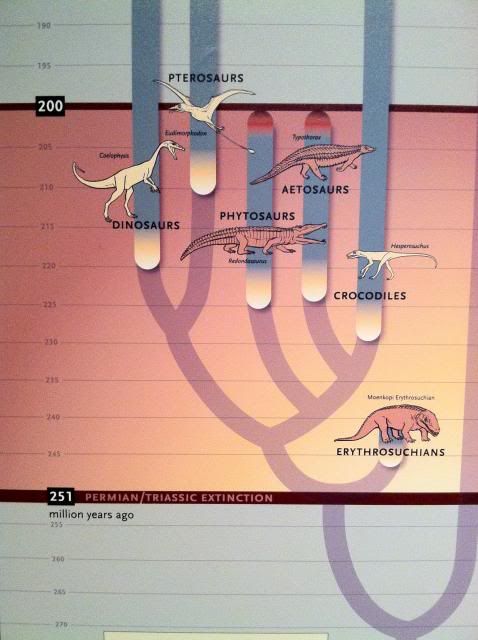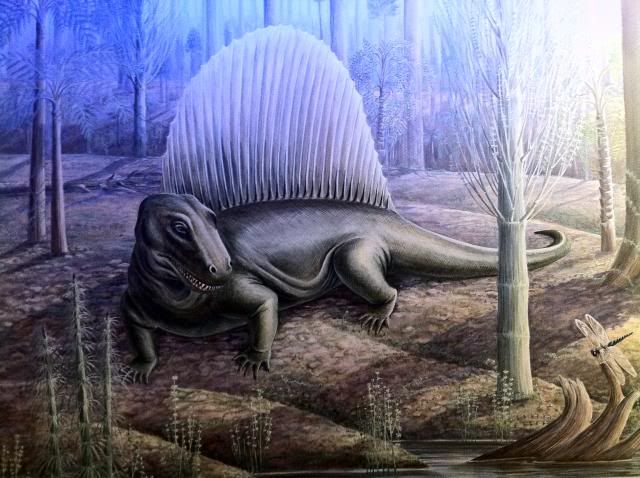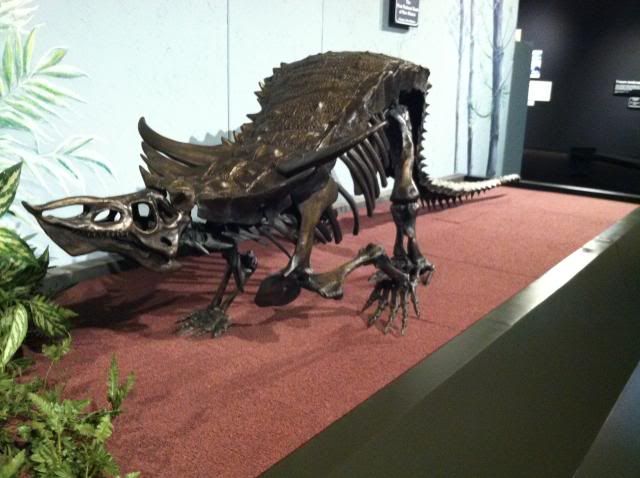Last month, I tried to throw a hard ball your way, because the month before was so easy. However, Isotelus easily identified this critter within a day of the blog being posted.
I love me some Aetosaurs! My guess: Originally Desmatosuchus haplocerus, now thought to be D. smalli.
Isotelus is correct, this specimen is an Aetosaur called Desmatosuchus. Whether this is D. haplocerus or D. smalli is unknown to me (way to make me look bad Isotelus).

(Taken at the New Mexico Museum of Natural History and Science)
Desmatosuchus lived 201 – 252 million years ago, during the late Triassic. As one can see from the skeleton, Desmatosuchus, as well as all Aetosaurs were armored creatures. The armored plates found on the back were most likely used as defense against larger predators that existed during the late Triassic. Something that might be less obvious is that Desmatosuchus, like all Aetosaurs, were most likely vegetarians. Another thing that is also not immediately obvious is that the closest living relative to Aetosaurs are crocodilians.

(Taken at the New Mexico Museum of Natural History and Science)
This means that not only is Desmatosuchus a member of the diapsid clade, but also a member of the archosaur clade. This clade includes everything you see in the image above. Aetosaurs make up an early example of armored archosaurs, something archosaurs will do again in the centuries to come.
Moving on to this months challenge:

(Taken at the New Mexico Museum of Natural History and Science)
Good luck to everyone. I also want to say that I like the fact that people are posting their answers as hidden.

